|
I've made two versions of this elegant gown, both in pink silk satin, but one with gold rouleaux embroidery and lace, and the other with silver. I still can't decide which I prefer! What drew me to this design initially was the unusual bias draped inverted "V" shaped panel at the front, and the metallic net bodice overlay, with its beautiful rouleaux applied trim. I made and applied all of the silk rouleaux by hand with fine silk thread, a task that took many, many hours. In the end, the gown was as close as I could manage to making an authentic replica of the 1909 French design (see photo of the 1909 fashion sketch). This gown was constructed precisely in the manner of formal evening gowns of the era, with a full boned foundation of silk taffeta and underskirt of China silk (see photos of inside construction). The version with silver embellishment is shown below (this was a bespoke order for a client).
2 Comments
Of all the years of the Edwardian era, I think 1909 is my favourite. It was a year when the graceful, flowing lines of the Edwardian aesthetic met the concept of a svelte, sinuous form -- the end of the S-curve era, but with a more refined, elegant simplicity than the over-embellished fashions of the earlier years. This evening gown is a perfect example. I took the pattern directly from a French sewing pattern of late 1909, but the style would have been fashionable until 1912. The process of extracting the pattern pieces from the original, heavily damaged pattern sheet and grading it for more modern sizes is worth a small book on its own! But I did manage to bring this lovely gown "back to life", once in a smaller size in purple silk satin, and once in taupe charmeuse in a larger size. Both were constructed just as the original would have been, in layers over a boned silk taffeta foundation. The sewing pattern for this beautiful and iconic Edwardian evening or ball gown is available in my Etsy shop -- just click on the button below. Since it is a fairly complex style, requiring good sewing skills, I recommend it for those with fairly advanced experience. The pattern comes with a complete booklet of sewing instructions keyed to "construction help" photos on this website.
Occasionally I've come across an antique French pattern in my collection that is so interesting or unique that I know I have to re-create it, and this was definitely the case with this wonderful automobile duster (coat) from early 1912, the epitome of fashionable motoring wear of the era. The original design was described as being in black linen with white lace -- a stylish and popular colour combination in 1912, and dramatic with the wide bands of heavy guipure lace. For the initial sample I made from the pattern, I chose a more subdued cocoa-coloured mid weight 100% linen with a fine herringbone weave. The weave created a subtle heathered effect in the finished garment. Although the basic, unlined coat is a relatively straightforward sewing project, the cut and construction is masterful and precise, like most other Edwardian and 1910's designs I've worked with, requiring careful preparation and meticulous sewing. I am always in awe of the technical prowess of the designers of these early 20th century garments and their textile "engineering" abilities, creating garments that follow and enhance the body's form. The deep lace embellishment sections presented a bit of a challenge. My solution was to combine fairly wide guipure lace with narrower lace in bands in an arrangement deep enough to match the original antique design. In total, I used nearly 9 metres of quality wide cotton Cluny lace and over 5 metres of narrower lace to replicate the original lace designs on this coat. I've made two versions of this duster, the first as a sample garment to test my pattern, and the second as a custom project on commission. Both were in medium-weight 100% linen, one the cocoa coloured herringbone weave linen, and the other a plain-woven sand colour. I used extra-large, natural buttons as decorative closures (the actual closures were hidden snaps), on the first Duster the buttons were made of horn, on the second mother-of-pearl. Both Dusters were lovely -- I'm not sure which I liked best. If you'd like to make this Duster for yourself, the pattern is now available in my Etsy shop! Just click on the button below to go directly to the pattern listing.
This lovely little dress was originally made as a custom commission for a client, who chose this design from several I had available from 1911 and 1912. The dress sample shown in the photos was made from a lavender-grey striped silk broadcloth, with ivory silk shantung "bib", skirt overlays and cuffs. The pretty collarette was hand-pleated, made of fine, semi-sheer cotton batiste. This design is available as a sewing pattern (#1911-C-001) -- you can find it in my Etsy shop by clicking on the blue button below. It is a project for a reasonably experienced sewist, with good intermediate skills, but the pattern does include my step-by-step written instructions to guide you through construction. This dress can be made in a variety of fabrics and arrangements -- it would look just as pretty in striped cotton or linen with solid-coloured cotton or linen contrast sections, or even in fine, lightweight wool for winter. In all-white or off-white, it would make a perfect flower-girl's dress for an Edwardian themed wedding! Purchase the sewing pattern here (#1911-C-001):
This corset, developed directly from an S-Bend design in a fashion publication of 1906, is typical of the corsets of ca. 1903-09. It is the corset that produced the iconic, fashionable early Edwardian silhouette, with its pouter-pigeon bosom, small waist, and ample derrière. The "S-Bend" designation refers to the fact that the corset's seaming and boning structure pushed the bosom forward in a rather unnatural manner, flattening the stomach, and allowing the derrière to be prominent. Several layers of lingerie, with their full panels gathered in back, accentuated this look. A sort of forced fashionable posture also enhanced this image, particularly in photographs of models and in fashion sketches of the era. Although I doubt very few women of the time actually walked and stood in the way suggested by fashion illustrations, the fashionable set must have made at least an attempt, for the contemporary satirist, Oscar Wilde, was quoted as referring to these women as looking like "crabs on wheels". I've made a number of corsets in this design, some in silk satin with a cotton batiste lining, some in brocade coutil, some in cotton jacquard twill. Examples of a few of these are shown below. All of these types of fabrics were commonly offered in corsets of the time, in various colours, although unlike Victorian corsets, most were in subdued, gentle tones of white, ivory, ecru, pink and pastel blue. I plan to offer this corset design as a sewing pattern with included photo tutorials. As fashions changed around 1909-10, the S-Bend corset was superseded by a straighter, longer, somewhat more natural type by about late 1909, although there were some "transitional" corset styles during the 1908-10 period.
Click on individual thumbnails to enlarge. This gown was for many years my "signature" piece, a replica constructed almost exactly as it would have been in 1904, down to even the hand-crocheted "dangles" that I custom-dyed to match the burgundy satin contrast. As with all historically accurate reproductions that I make, this one was constructed over an early Edwardian style boned foundation/underbodice, over which was mounted a cream coloured satin and lace "plastron" (sleeveless filler) with a high, boned lace collar. The bolero itself is a separate piece, lined and trimmed to match the skirt (or perhaps it was vice-versa!). The skirt required over 6 metres of fabric, and includes a drop-skirt lining of rayon taffeta, attached only at the waistband. The fabric used was a fine, semi-transparent Swiss cotton voile in a lovely "old rose" colour. The 1904 fashion sketch shown below, of a gown described as being in old rose coloured voile, formed the basis for this project. The hat was made by me to match the gown, based on a number of examples of the era. This was another project that took dozens of hours of research, experimentation, design and pattern drafting to exactly reproduce the original, and another 80 to 100 hours of actual construction time (including hand-crocheting and dyeing the "dangles", cutting and ruching all the pink chiffon insets, and custom-cutting and top-stitching the many curved appliquéd decorative bands. The hat was made of ruched cream silk chiffon and burgundy satin, mounted on a large straw base, with fabric roses and ostrich feathers as trim. This was one of the most complex and time-consuming replicas I've ever made. It was a joy to wear, with its grand matching hat, but I've moved on to other projects since, and the gown (and hat) were recently sold. The matching 1904 hat:
This gown was one of my early Edwardian full project replicas, based on the French fashion sketch shown below. I think what attracted me to this sketch at the time was that the fabric I had on hand -- a fine quality vintage printed silk that I'd found on a bargain table in a small shop -- looked so similar to the 1906 fashion plate. And I had over 10 metres of it! I was determined to reproduce this gown as accurately as possible, since the silk was such a beautiful quality textile. What I didn't fully anticipate was the amount of gold flat braid trim that would be needed to replicate the design shown in the sketch. In the end, it required over 25 m of trim, and about 8m of fine lace.
The replica gown was built over an early Edwardian style boned foundation constructed of fine cotton percale and closing at centre front. The bodice closed asymmetrically over the foundation, at side front, at the left shoulder, and around to the back of the high collar. The skirt was made with a drop-skirt lining of rayon taffeta with a pleated dust-ruffle, as most dressy gowns of 1906 would have had. There was no antique sewing pattern for this gown, it was one of the occasional garments I drafted and draped based a sketch, and using other similar garment patterns of the era for reference. I fashioned a deep bias draped sash from rose-coloured silk satin to match the print in the fabric. The gown was sold years ago since I didn't think I'd have another occasion to wear it. Considering the many metres of silk and the over 80 hours of construction that went into this gown, it was sold at a pittance. I've rather regretted it since. I originally wanted to develop this gown as a sewing pattern in my line of Edwardian patterns, but later decided it was just too complex for the person with average sewing skills. I may still return to it at some point and produce it as a "Master Class" pattern for advanced historical sewists if there seems to be any interest in it. This Gallery collects together all in one place photos representing over 15 years of replica antique garments I've created, from various time periods, mostly for women, but also children's and men's items. I'm in the process of moving my entire old online photo album (which is now apparently so outdated that it's incompatible with my website) onto this Gallery, and thus new content will be added as I have the time. It may take a while to complete that task, so please check back again! Once I've finally copied all the previous photo portfolio contents to this Gallery, I'll be using this new Gallery as an ongoing record and reference to my completed work. This will be in contrast to my regular blog (see "Blog" page), which will feature "work-in-progress" and background information on my projects. This Gallery is arranged by subject and/or era under the "Categories" heading at right. Click on the category in the list you're interested in, and scroll down to find all the entries under that heading. Some content is cross-posted in two or more categories, so you may find some duplication. Replica antique garments I've created which have sewing patterns available in my "History House" pattern line will have a link to the pattern itself.
Thank you for stopping by, and I hope you'll enjoy browsing this Gallery! Patricia This 2-piece gown, consisting of a separate bodice with a boned foundation, and a tiered skirt, was created based on a ca. 1904 printed cotton gown (sold privately), as well as similar gowns of 1904 (see antique sketches included below). The gown design is typical of the fashions for fancy afternoon or reception gowns of late 1903 or 1904. Over 16 metres of lace edging was used. I mostly custom-drafted the skirt, but did adapt the bodice from existing 1904 sewing patterns in my collection, with several alterations and changes to better reflect the style of the original antique gown. Also included here are photos of the gown inside-out, showing the interior construction. Click on individual photos to see captions. |
OverviewA photo portfolio, arranged by historical era, of my work in replica antique garments. Click on any category entry below to see contents. Categories
All
Archives
June 2023
|


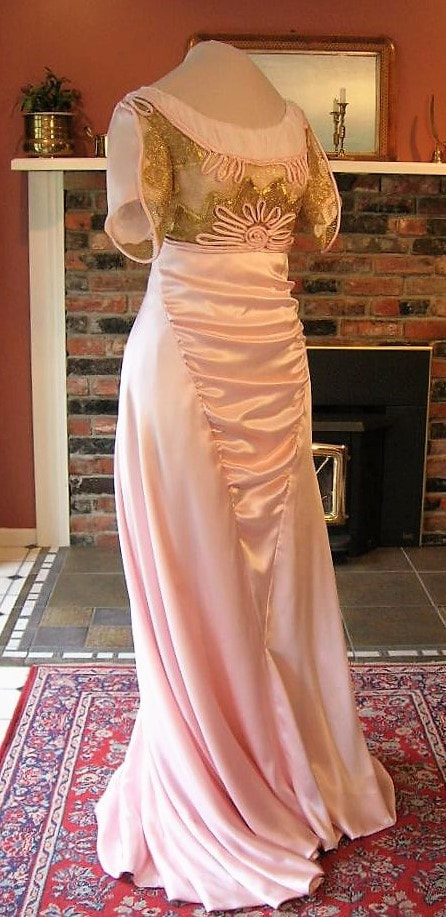









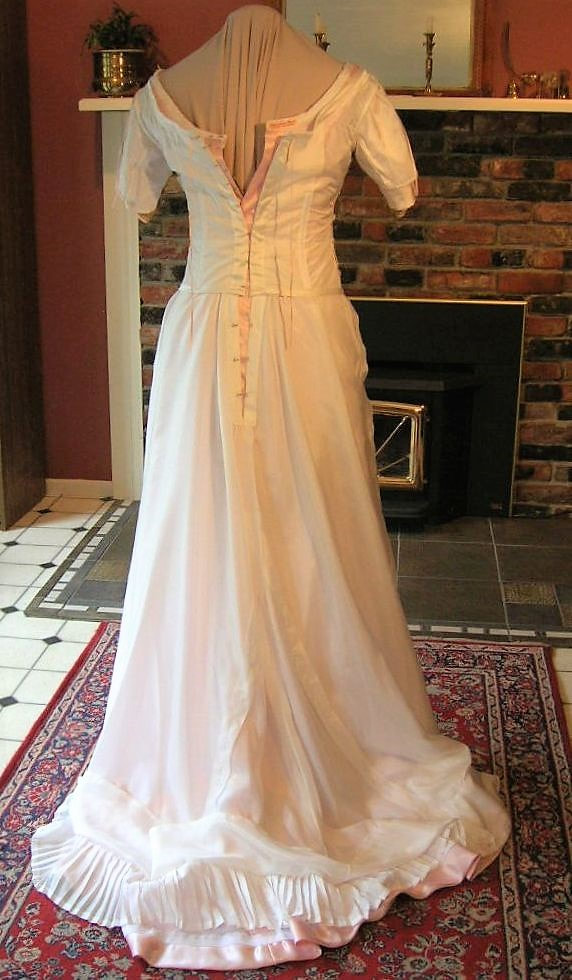




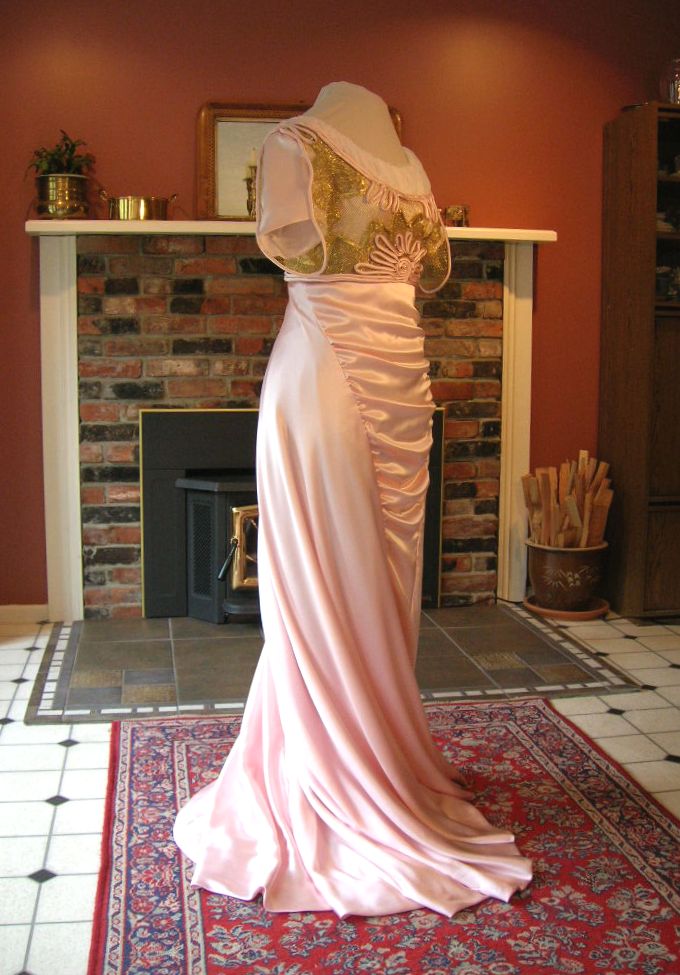


























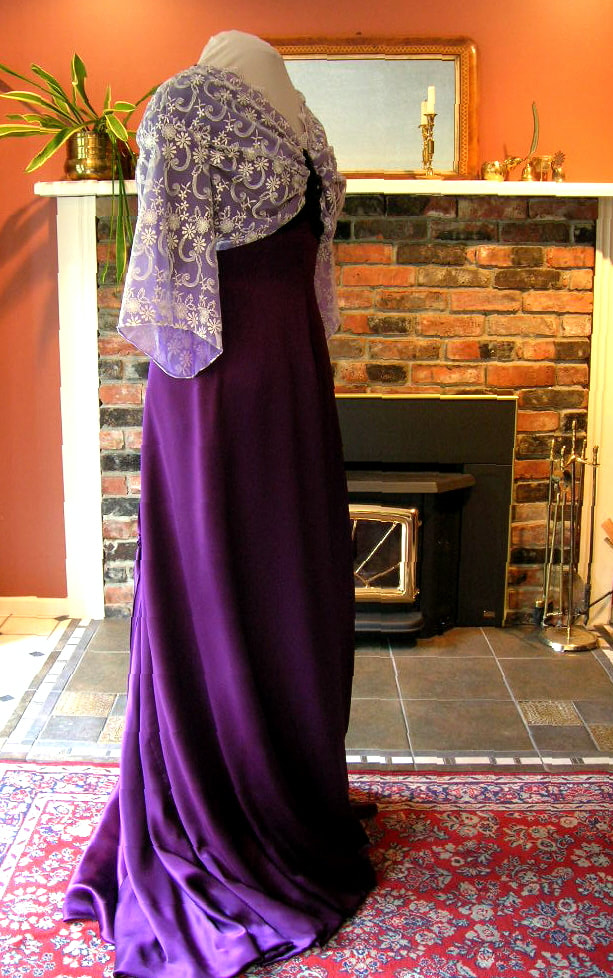






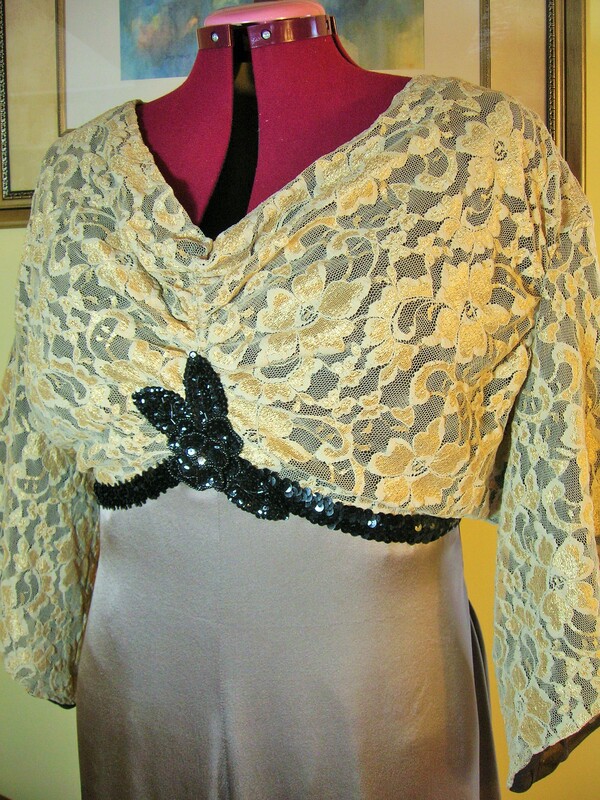

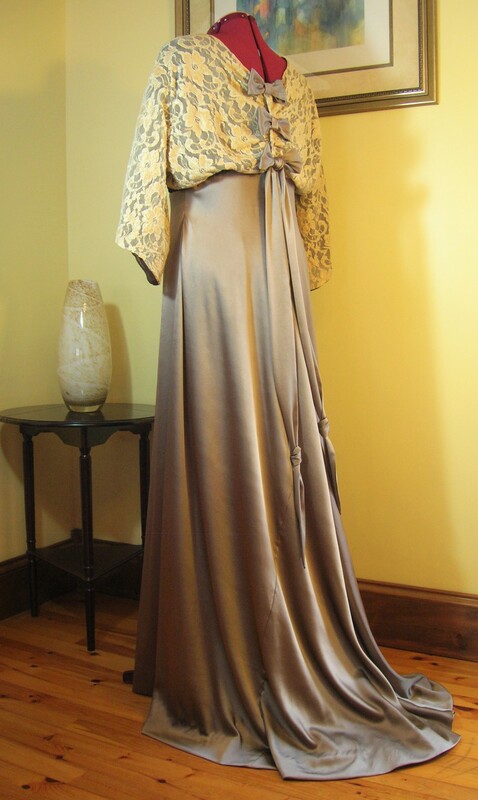


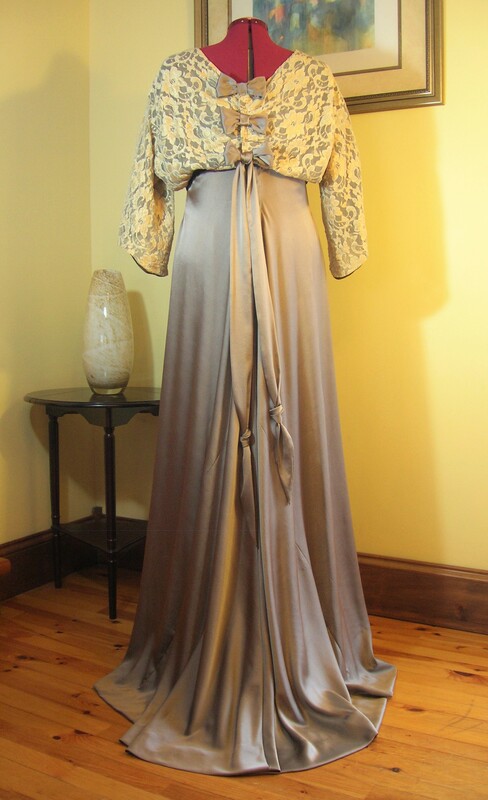



















































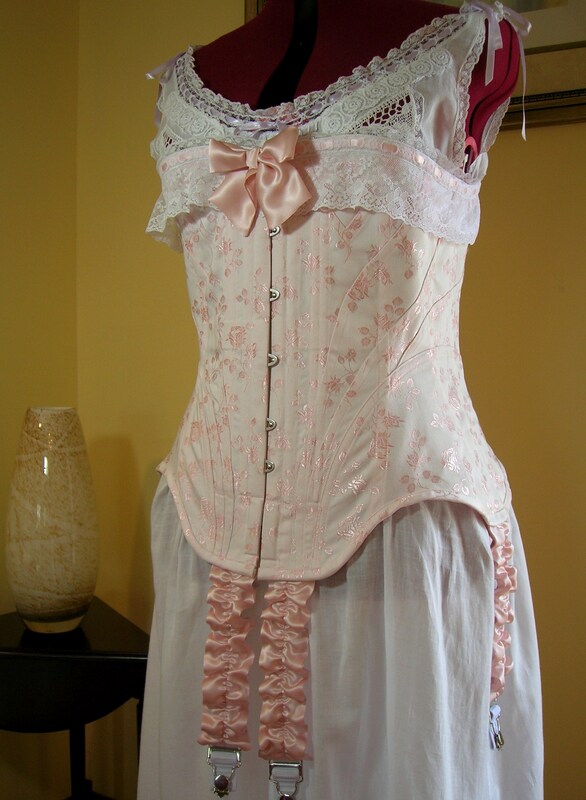

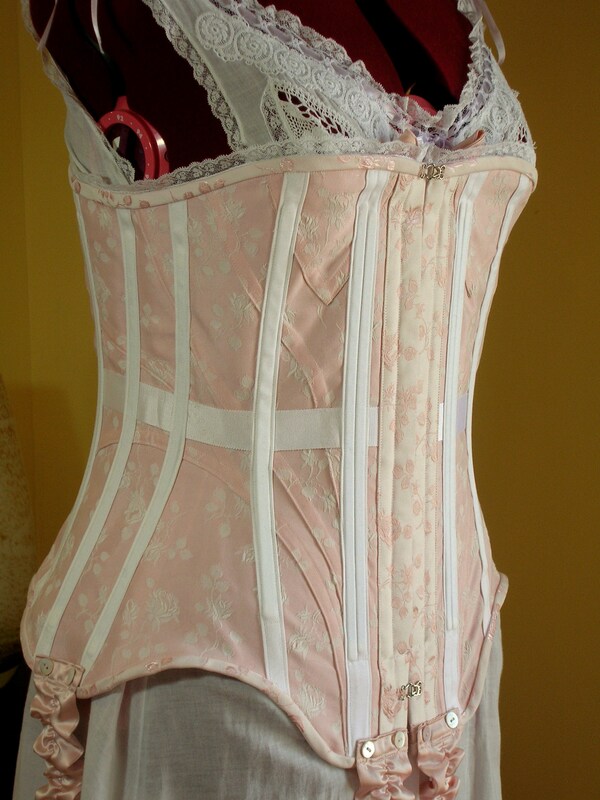
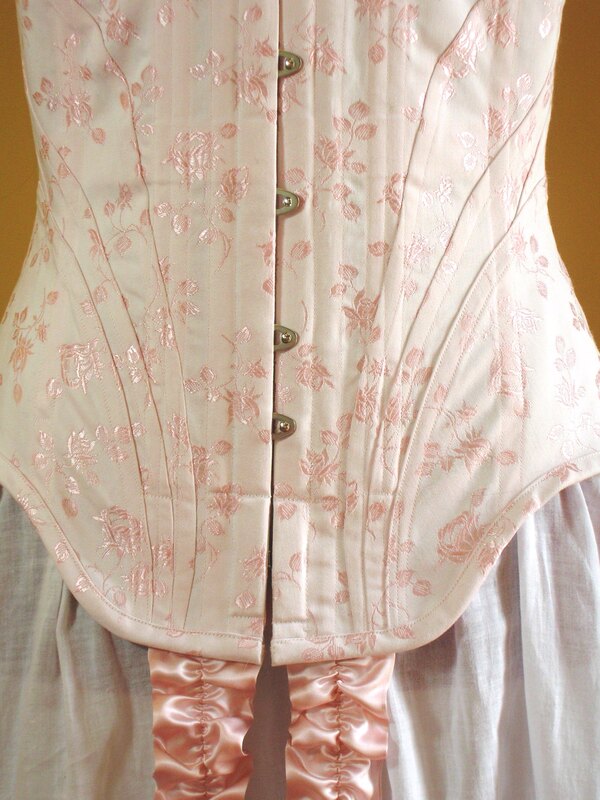











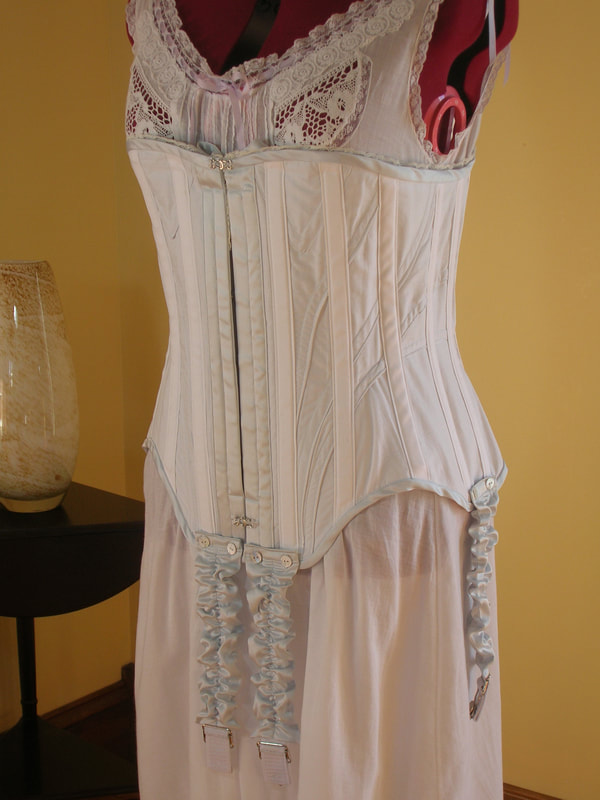
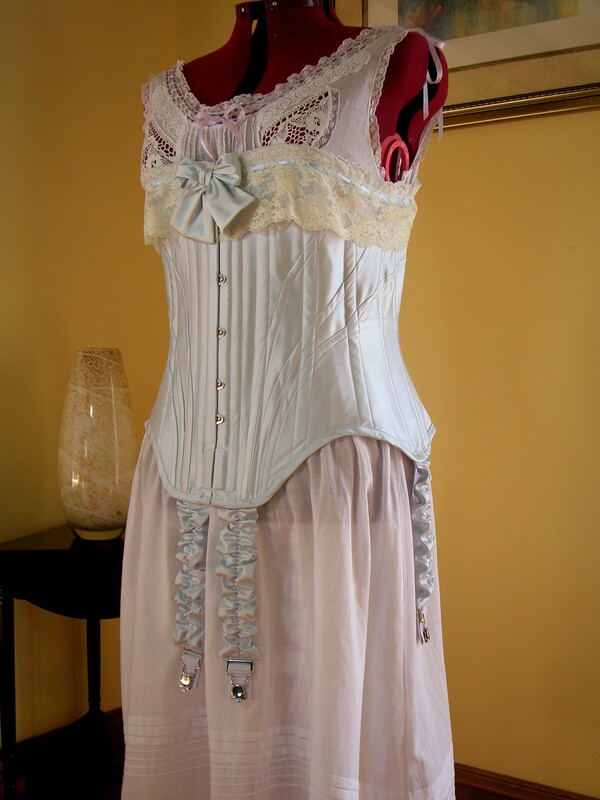







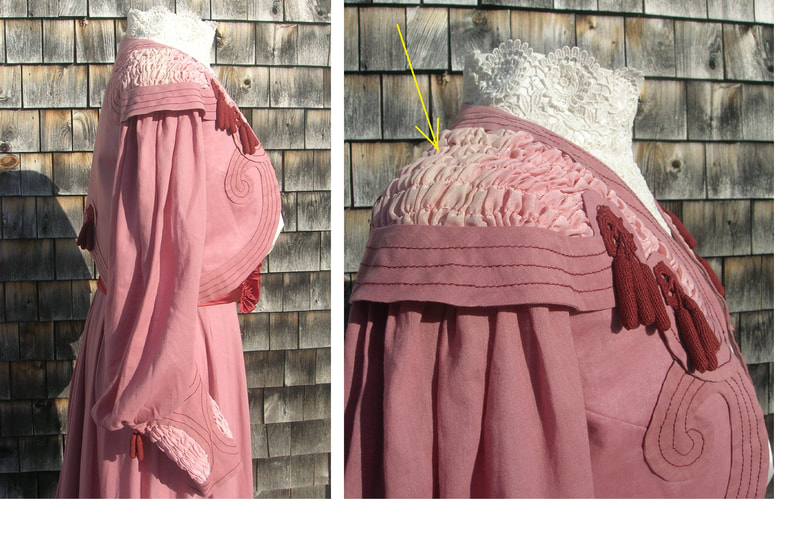























































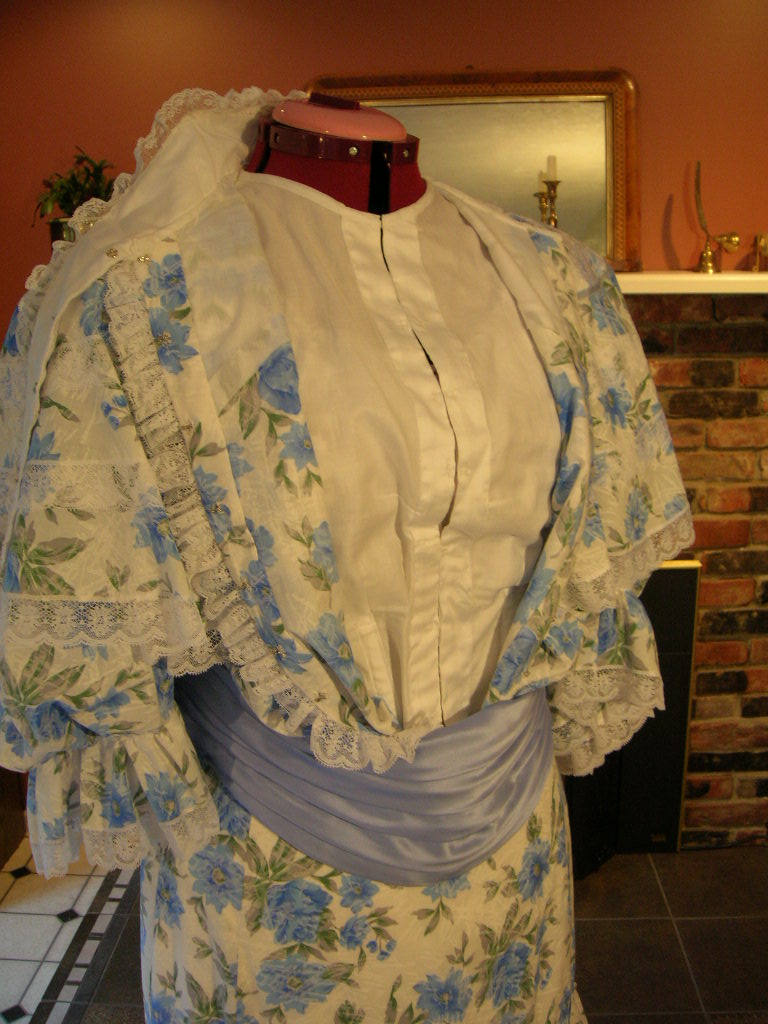




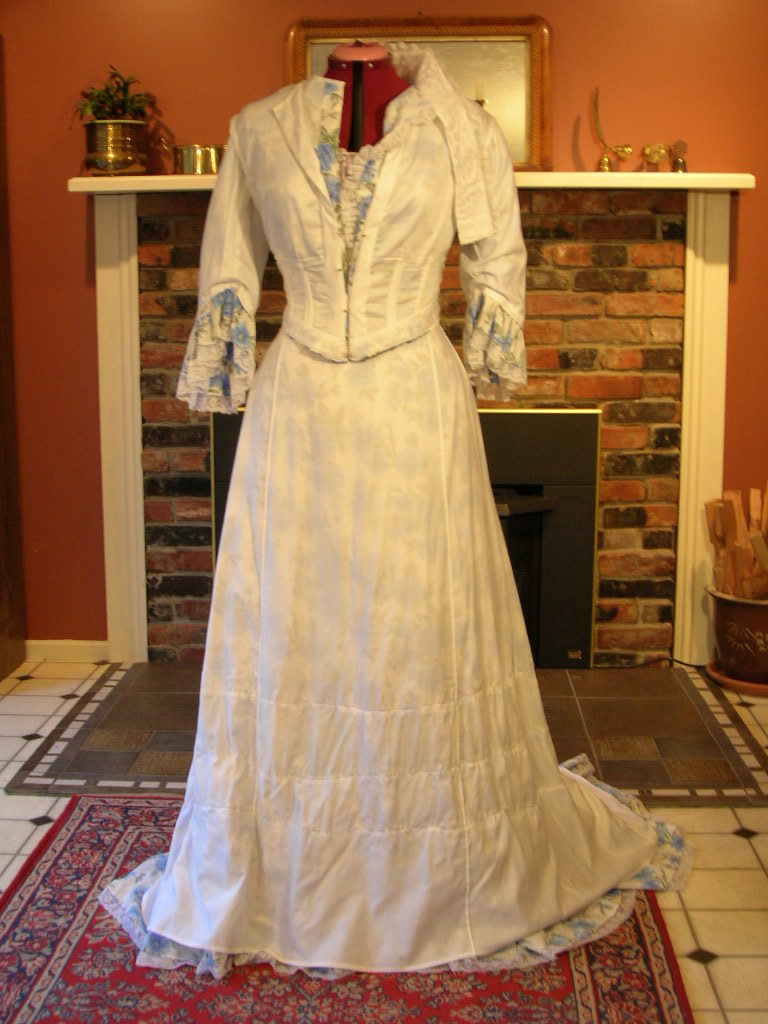








 RSS Feed
RSS Feed